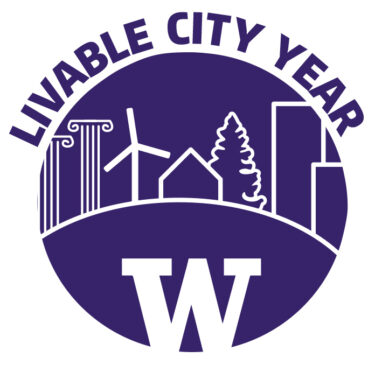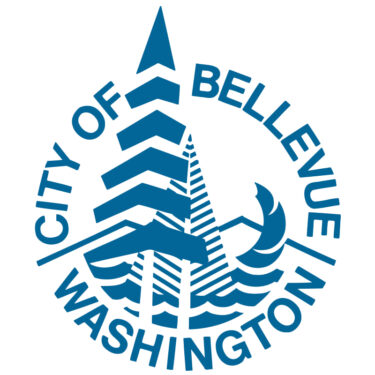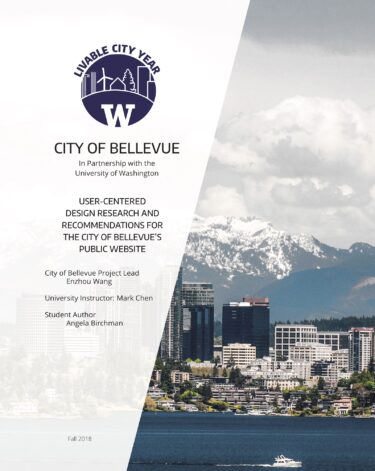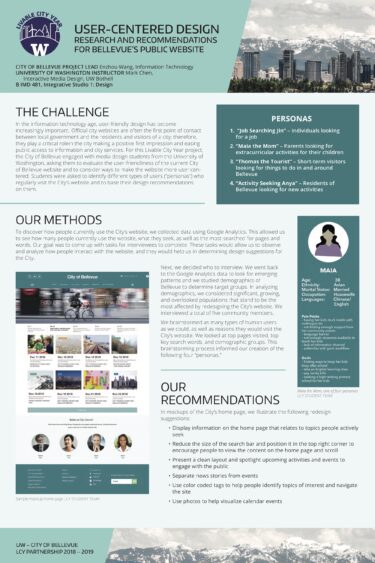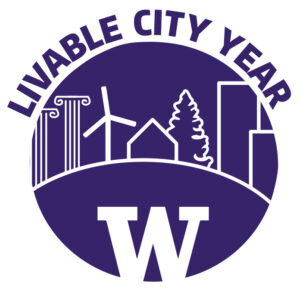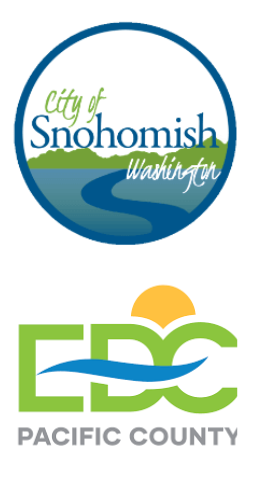User-Centered Design Research and Recommendations for the City of Bellevue’s Public Website
2018-2019 Livable City Year – Bellevue
City Project Leads: Enzhou Wang, Information Technology
UW Instructor: Mark Chen, Interactive Media Design, UW Bothell
Course: B IMD 481, Integrative Studio 1: Design
Project summary:
In the computer-technology age, user-friendly design is increasingly important. Government websites are often the first point of contact between a city agency or department and the residents of a place. Thus, websites are key to cities making a positive first impression and to making it easier for people to access information and city services. For this project, the City of Bellevue engaged students to evaluate the user-friendliness of their current website, and to suggest user-centered improvements. Bellevue’s goals were to characterize “personas,” different types of users who regularly visit the City’s website, and to use these “personas” to inform recommendations for the redesign of the City’s website.
In order to identify areas for improvement, we interviewed and observed real people using Bellevue’s website. We narrowed our focus to specific user-groups. To do this, we formed a set of initial personas, which helped us target particular subsets of Bellevue’s population. These initial personas informed who we reached out to for interviews and observations.
Prior to determining who these personas would represent, we analyzed Google Analytics data related to website use. We looked out for the most-visited web pages and for the most searched-for words. This equipped us with insights about the top reasons people visit the City’s website. With this information, we created four basic personas to represent people who commonly use the City’s website:
“Job Searching Jin”
“Maia the Mom”
“Thomas the Tourist”
“Activity Seeking Anya”
This initial set of personas became the starting point from which we chose people to interview and observe. After conducting interviews and observing different people use the website, we revisited this original set of personas to compare similarities and differences and to refine them before designating a final set of personas.
Bellevue’s goals were to characterize different types of users who regularly visit the City’s website, and to use these “personas” to inform recommendations for the redesign of the City’s website.
The most common topics users searched for and clicked on had little to do with anything below the centered search bar and menu icons. Information that is currently available to users ranges from being extremely vague to strikingly specific. This range tended to confuse us as well as our interview participants.
With research and data backing up our personas and analysis, this project seeks to build on Bellevue’s user-centered design and improve the usability of the public website. Our main proposals for the City of Bellevue involve reorganizing the content of its home page to reflect the main reasons people land on their website, and to make better use of the space above the “fold” of the home page. We created two mockups of a home page, focused on maximizing usage of the space above the “fold.” This required us to decrease the size of the search engine bar, to create a response-carousel of images that represent specific events occurring each day, and to organize the calendar of events to match popular topics.
Part of the 2018-2019 Livable City Year partnership between the University of Washington and the City of Bellevue.
See all Livable City Year projects in Bellevue that UW students and faculty worked on during the year-long partnership.
